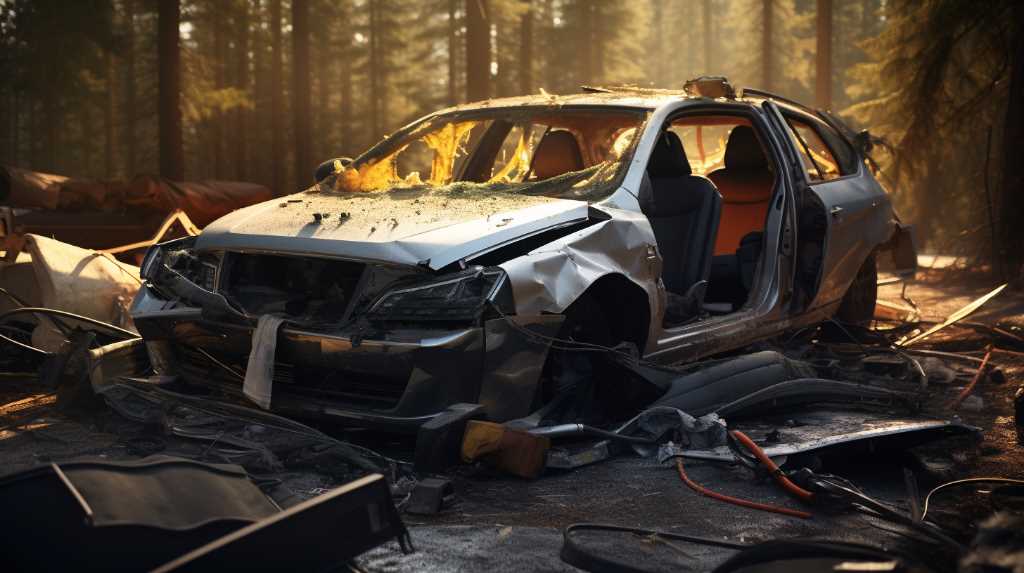
Front crashes between cars are very serious and can hurt people badly. When two cars hit each other head-on, the people inside can get hurt by the strong force of the crash. This can cause brain injuries because the head gets hit really hard. The sudden stop can also hurt the neck and back, sometimes causing long-term pain or even making someone unable to move.
Faces and teeth can get hurt if they hit the steering wheel, dashboard, or airbags. The crash can also hurt the inside of the body, like organs, because of the pressure. Arms and legs can break or be crushed. It’s important for doctors, safety experts, and car designers to know about these injuries so they can help people after a crash and make cars safer.
Let’s remember to make cars as safe as possible and to always wear seat belts to help prevent these kinds of injuries.
Traumatic Brain Injuries
Head injuries from car crashes can be very serious because the sudden hit can shake the brain inside the skull. This can cause different kinds of brain injuries, like mild concussions or more serious damage. When the brain gets hurt, it can bleed, swell, or the nerves can get injured. These injuries might make a person pass out, forget things, or have trouble with their body movements.
Doctors use special brain scans, like MRI or CT scans, to see how bad the injury is. It’s hard to predict how well someone will recover, so they might need immediate treatment and long-term help to get better.
Neck and Spinal Damage
Following traumatic brain injuries, cervical and spinal cord damage represent another significant category of impairments frequently sustained in head-on car collisions. The mechanism of injury typically involves sudden deceleration, which can cause hyperflexion and hyperextension of the neck, known as whiplash. This violent motion can result in strain or sprain of the neck muscles and ligaments, disc herniation, or even fractures of the cervical vertebrae.
Spinal cord injuries may occur if bone fragments or disc material compress or sever the spinal cord, potentially leading to temporary or permanent paralysis. The complexity of these injuries necessitates a thorough clinical evaluation, often including radiographic imaging like X-rays, CT scans, or MRIs, to determine the extent of damage and to formulate an appropriate treatment plan.
Facial and Dental Trauma
Head-on car crashes often hurt the face and teeth badly. This happens because the face gets hit by the steering wheel or dashboard. People can get cuts, broken facial bones like the cheekbones and jaw, and damaged or knocked-out teeth. Eye injuries that could make someone not see well can also happen.
When people don’t wear seatbelts, these injuries are worse because they move forward more and hit the car’s inside harder. Doctors have to work together to fix these kinds of injuries, which might mean surgery on the face or fixing teeth.
Internal Organ Injuries
In head-on car crashes, people often get really bad injuries inside their bodies because the crash hits them hard. When cars hit each other, everything inside slows down fast and gets squished, which can make the organs move around, get bruised, or even rip. This can be very dangerous.
The liver and spleen are at high risk because they’re big and sit in the abdomen. If these organs get cut, a person can bleed a lot and might need surgery right away to stop the bleeding.
Also, the crash can hurt the chest area, causing lung bruises or making blood collect around the heart, which makes it hard for the heart to pump properly.
It’s super important to find these injuries quickly using special scans and tests because that helps doctors decide the best way to take care of the person who’s hurt.
Limb Fractures and Amputations
Injuries from car accidents where two vehicles hit each other head-on can be really bad, sometimes causing broken bones in arms or legs. These breaks can be simple, with the bone staying aligned, or very complex, with the bone breaking into many pieces.
The reason these fractures happen is that the arms and legs get hit with a lot of force in these accidents. Doctors need to quickly check the injuries with X-rays or other scans to see how bad they are. To fix the broken bones, they might need to perform surgery where they put the pieces back together and hold them in place with metal rods or screws, a procedure known as ORIF.
If a limb is too badly damaged or the blood flow is affected, sometimes the only choice is to amputate the limb to stop even worse problems like infection or tissue death.
Remember to always wear seat belts and follow traffic laws to reduce the risk of such severe injuries. If you’re looking for a car with top safety ratings, consider models like the Subaru Outback or the Honda Accord, which are known for their strong safety features.
Conclusion
Head-on car crashes can be really bad. They can cause serious brain injuries, neck and back problems, face and teeth damage, hurt internal organs, and break bones so badly that sometimes limbs have to be removed.
This shows just how strong the crash is and why it’s so important to make cars safer and try to stop accidents from happening. Making car safety better and getting quicker medical help can make a big difference in how badly people are hurt in these crashes.